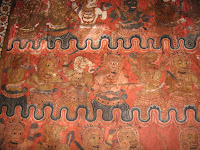Sigiriya And Pidurangala in one day
Pidurangala
First you need to select what is the first sigiriya or pidurangala. Because some time it has bad weather in that area.
If you tring to go pidurangala in a rainy day, you have to very careful because rocks can be slippery. So be careful.
It will take 2 or 3 hours if you get videos and photos because it is very beautifull.
best time is after 2 p.m.
Sigiriya Rock
This is the one of the wonder in the world. It is a very beautiful place.
It is a castle. used by king kashyapa. IT is 370m heights in sea level. water spring is working in a rainy days. This is the one of the best place to visit.
IT will take 2-3 hours.
It will open 7a.m. to 7 p.m.
Best time is 7-9a.m. or 3-5p.m.




































